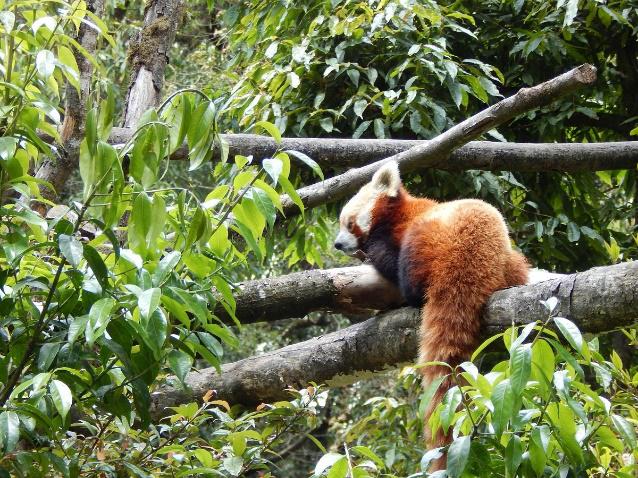On January 15, 2022, two pairs of red panda were placed in the reintroduction phase in India, in the Singalila reserve! An imminent release for Smile, Shifu, Noel and Yeshe, respectively four, six, eight and nine years old. They have so far been released into the progressive release facility located in the park. The facility is spread over 2 hectares of land in the national park. Once the red pandas are sufficiently acclimated, they will be released outside the facility.
These animals will of course be under surveillance during the first months, thanks to the GPS collars they have been equipped with.
Precious animals!
Thanks to the expertise provided by the Rotterdam Zoo, which manages the European breeding plan for this species, genetic and behavioral analyses were carried out to select these individuals from all those living in captivity! The precious genetics of these animals allows us to hope for the viability of a future reproduction in the wild.
The first releases in 2003 and 2004 in this same reserve were not successful, as the animals never reproduced in the reserve. In the absence of ensuring the sustainability of the species, the animals were able to enjoy an adventurous but free and protected life in the Singalila reserve.
This time, the 4 little hopefuls will be followed for 72 weeks. This will allow us to measure the success of their return to the wild while hoping that the animals thrive again in this sanctuary in northern India, ready to make a great effort to save the red pandas from extinction!

The Darjeeling Zoo on the front line
Si ce projet est l’aboutissement d’un long travail de conservation de l’espèce au sein de dizaines de parcs zoologiques du monde entier, c’est grâce au dynamisme du zoo de Darjeeling, en Inde, que ces relâchés ont pu avoir lieu !
Indeed, this park, located in the foothills of the Himalayas, collaborates with European zoos to allow the reproduction and reintroduction of animals in the reserve, ideally located and preserved by the government.
These efforts started more than 30 years ago! The first successful (planned) breeding of red panda in Darjeeling took place in June 1994, when two cubs named "Ekta" and "Friend" were born to "Basant" and "Amita".
In November of that year, Hari (male, born June 30, 1993 in Rotterdam), Gora (male, born June 25, 1993, Cologne) and Indira (female, born June 26, 1993 in Madrid) arrived in Darjeeling to bring new blood and continue the planned breeding program.
Again, in 1996 Omin (original name Tsambo, a male, born on 17 July 1994 in Rotterdam) and Vicky (female, born on 26 June 1994 in Antwerp) joined the zoo. Later, 'Vicky' (renamed Prity) and 'Jugal' (male, born in Darjeeling zoo) were transferred to Gangtok zoo (Sikkim province) to create another breeding and conservation center.

In the last 10 years, there have been a total of 38 births of red pandas in captivity in this zoo. It is encouraging to add that the Gangtok Zoo pair has also started breeding.
The Red Panda Conservation Breeding Project at Padmaja Naidu Himalayan Zoological Park, Darjeeling, is one of the most successful breeding programs and the only one (with a sub-center in Gangtok) for the species in its natural range.
All registrations of the program and the animals are not only done at the Darjeeling Zoo, but also at the international studbook of the species in Rotterdam (Netherlands).
All these joint efforts show us the way: protect habitats, restore environments, support the local economy and act together as a team, so that one day nature will rise again!
